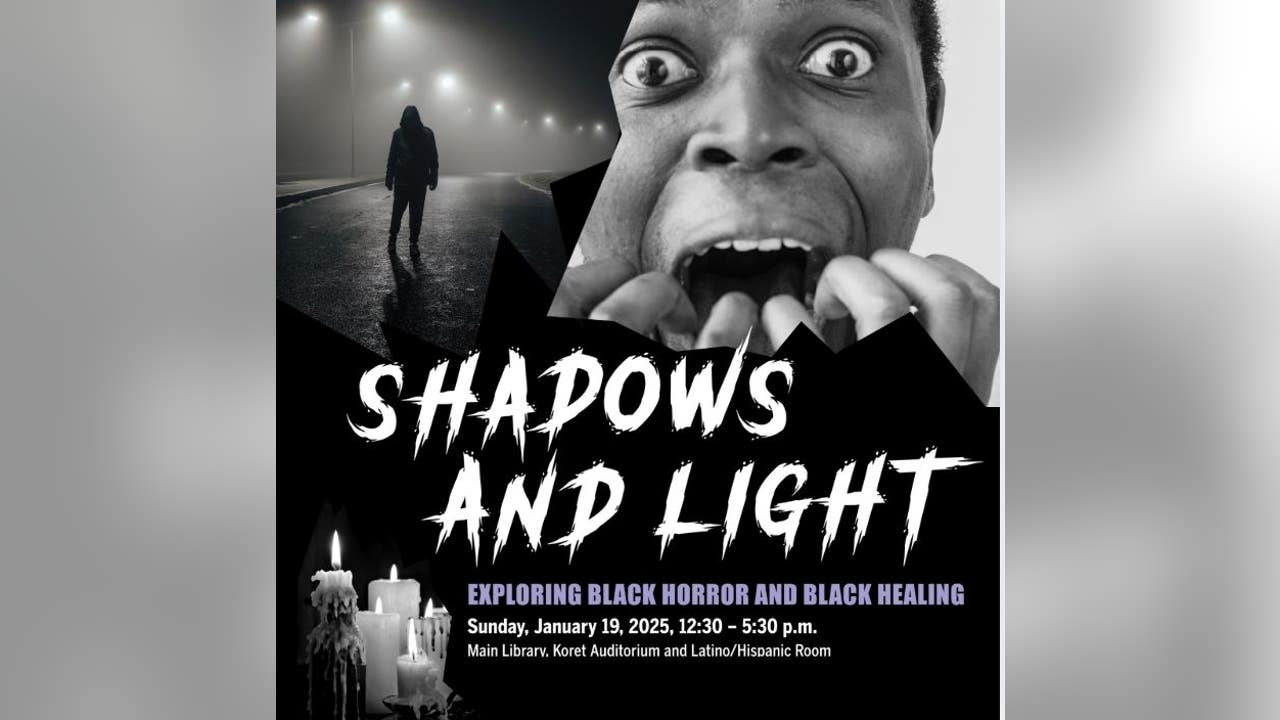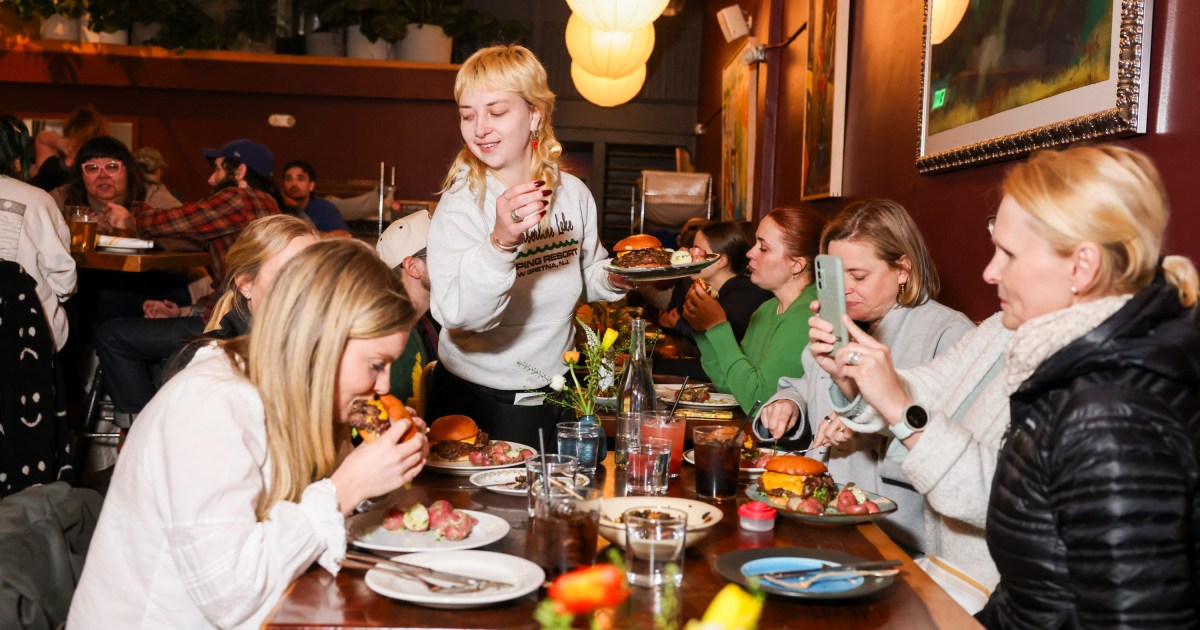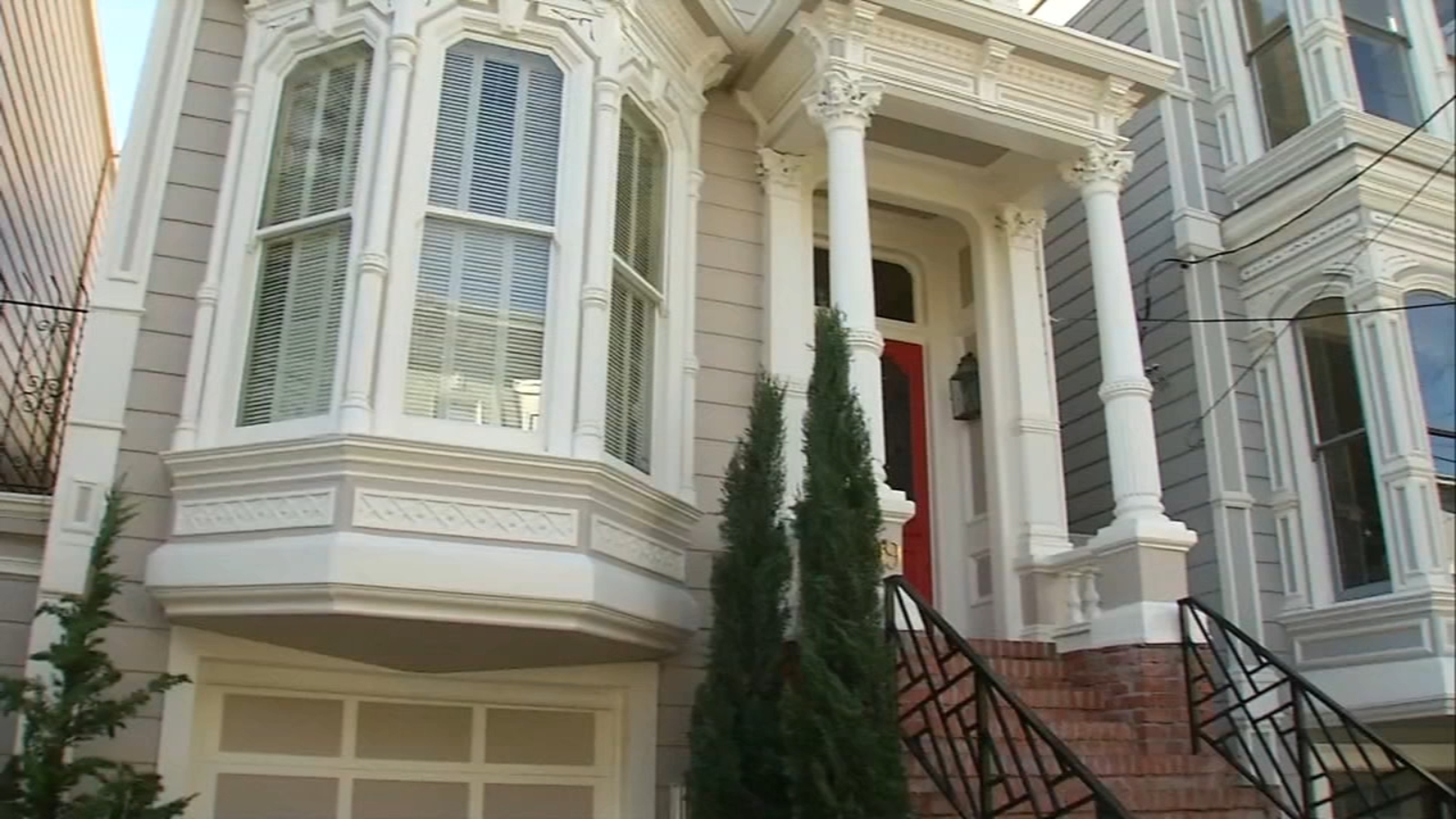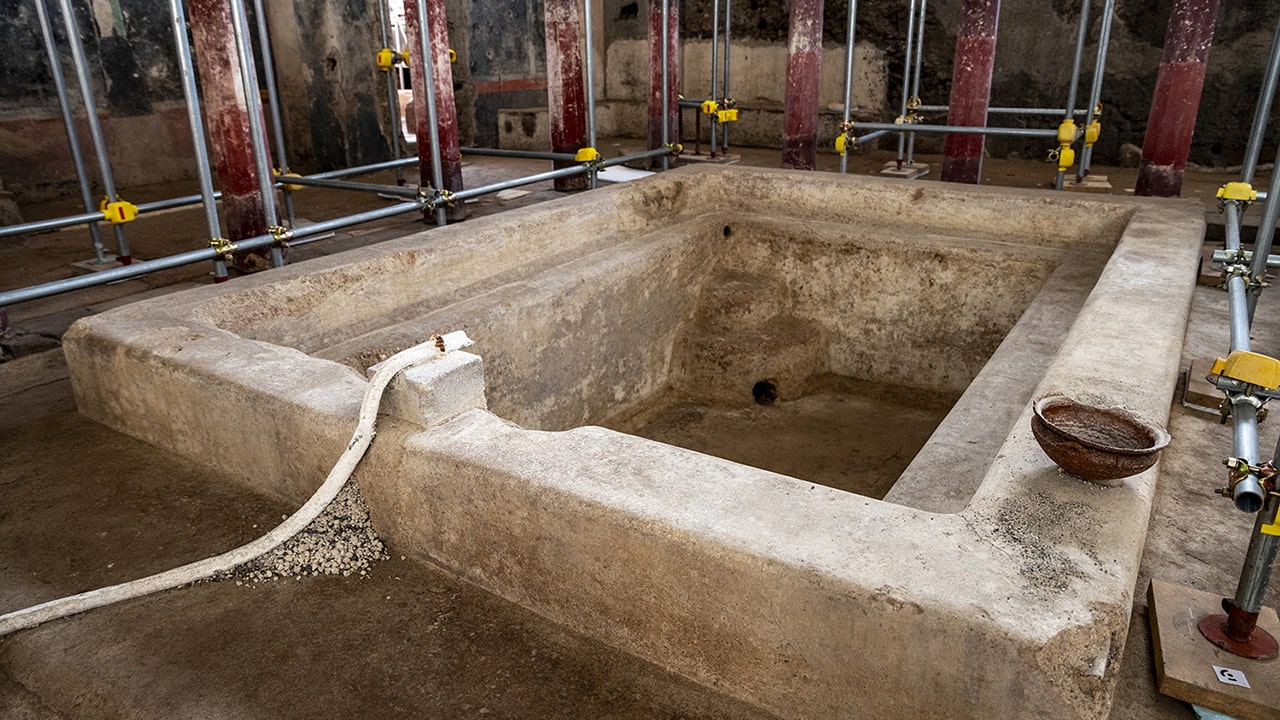San Francisco, CA
‘Full House’ And ‘Fuller House’ Home For Sale In San Francisco

The house featured in the opening credits of Full House and Netflix reboot Fuller House is again on the market in San Francisco.
The owner of the 3,728-square-foot, four-bedroom, three-and-a-half bath home is asking $6.5 million. In addition, there are two laundry rooms, a gym and a private movie theater and a two-car garage, among other amenities.
Located in the city’s Lower Pacific Heights neighborhood, the home was once owned by Jeff Franklin, the creator of Full House.
The original Full House family allegedly lived in one of the homes called the Painted Ladies in San Francisco’s Alamo Square. The red-doored house in the opening credits and now on sale was a facade located at 1709 Broderick Street in San Francisco.
The interiors for both shows were shot on a soundstage.
Coldwell Banker has the listing and more details here.

San Francisco, CA
San Francisco Public Library explores Black horror and its healing powers

San Francisco Public Library explores Black horror and its healing powers
The San Francisco Public Library kicks off more than a months worth of Black History Month programming starting with the Martin Luther King Jr. holiday. Up first, a look at Black horror and its healing powers.
SAN FRANCISCO – The San Francisco Public Library kicks off more than a month’s worth of Black History Month programming starting with the Martin Luther King Jr. holiday. For their premier event on Sunday, they will examine the Black horror genre and its role in healing communities.
This year, Dr. Martin Luther King Jr. Day coincides with Inauguration Day in the U.S.
One day before the convergence of the holiday and Donald Trump’s inauguration, The SFPL presents, Shadows and Light: Exploring Black Horror and Black Healing.
Organizers say the timing of the event is aligned with MLK Day, and the overlap with Inauguration Day is purely coincidental.
Shawna Sherman, manager of SFPL’s African American Center, says the event marks the launch of more than a month’s worth of Black History Month programming at the library and that they always kick off the festivities on MLK Jr. weekend.
What they’re saying:
“We partnered with Sistah Scifi on this event because we think it’s a great opportunity for Black horror fans to come together and celebrate their love of the genre,” Sherman says. She adds that the library as a resource provider is a venue for free exchange and deep conversation on a variety of perspectives.
In 2019, Isis Asare launched Sistah Scifi, the first Black-owned bookstore focused on science fiction and fantasy.
Asare says the event will attract as many as 300 people throughout the day. It includes a keynote talk by author and film historian, Tananarive Due, as well as deep dives into the historical context of Black horror and how narratives from this genre can reflect societal fears and injustice.
Healing and empowerment
George Romero’s classic zombie apocalypse film, 1968’s ‘Night of the Living Dead’, is explored in a documentary film produced by Due, Horror Noire: A History of Black Horror.
In reality, the late ‘60s was a tumultuous time of societal upheaval rife with assassinations, including those of Dr. King and Malcolm X. Romero’s film is revolutionary in the sense that it’s a Black man, as Due once put it, who is the “rare Black lead” character in the film. Prior to this film, Due and other scholars observed that Black people in horror were only included as comic relief or to elevate white characters to make them appear more dignified.
The character, named Ben, is handsome, strong-willed, decisive and dignified whether the audience was ready for him or not. Due has lectured that this type of character may have been nightmarish for racist viewers of that era who were anti-integration. Seeing Ben ordering around the white characters may not have sat well with audience members who didn’t want to change the social structure.
In the end, Ben, the final survivor of the zombie onslaught is tragically shot by a white mob.
“Exploring Black horror in particular allows us to look at those monsters and overcome,” Asare says. “You see that in ‘Night of the Living Dead’. You see that in Parable of the Sower, where the characters deal with a lot of the stuff that we’re dealing with today. A presidential candidate who wins on the [slogan] of Make America Great Again and you see a character overcome that.”
She’s referring to Afrofuturistic sci-fi author Octavia Butler’s prophetic novel, which has been adapted into a graphic novel by John Jennings, who is featured at this event in a panel discussion on Healing Through Horror.
Set in California, 2025, the original book was written more than 30 years ago.
“You see a California that is engulfed in wildfires and see how characters navigate that,” Asare says. “Black horror in particular is, we’re hoping, a space where our community can face our monsters both the real and imagined and come away with tools to feel powerful and take those tools towards a path of healing.”
Triple marginalized
“I really love writing about queer Black girls and horror in general is just one of my favorite genres,” Hayley Dennings said.
Dennings is an author who grew up in the Bay Area. She now lives in Oakland. Her first novel, This Ravenous Fate, is a New York Times bestseller. In her work, she looks to twist around the tropes of the past.
“I feel like horror in general is like a great genre used to explore real human emotions and especially the tumultuous times that are happening,” says Dennings. “You see it a lot, especially in Gothic horror. Specific monsters were used to portray minorities and to scare people off from having certain connections to those minorities.”
She explains how this is seen in stories about vampires. “Vampires are seen as these creatures of the night or our shadow selves that represent desire that a lot of people don’t like to admit to.
“I am writing about queer, Black girls who are triple marginalized. I don’t want to write a book that tells girls they can’t be queer, they should be ashamed of their Blackness,” says Dennings. “For me, it’s very empowering to get to use these classically problematic tropes and turn them around into something more powerful and to tap into the darker parts of our psyche and kind of use it as a way to explore our trauma, which a lot of times are left hidden.”
She sees what some hold against her almost like a superpower.
“There aren’t that many stories that are honest about this experience,” Dennings says. “I think the publishing industry likes to make things more palatable to a more straight white audience. So it’s cool to get to be really raw about my truth and to actually have people connect with that.”
History still relevant
Dennings’ current novel is set about 100 years ago during the Harlem Renaissance.
“There are a lot of issues that the characters are facing 100 years ago in 1926 that are still relevant today,” says Dennings.
She lists medical racism (Tuskegee experiment) and misogyny towards Black females as examples. Looking back, she says even the intergenerational trauma from the generation that endured slavery was still relevant and had not been processed by the 1920s.
“It’s a way to find connections to our ancestors and our pasts. So much of the history, the Black history that I was taught was full of trauma,” says Dennings. “I have a lot of readers who tell me, ‘This feels really familiar even though it is a historical novel.’ Even though there is so much of our history that has been ignored, we still can uncover it and still feel really connected to it.”
Healing from trauma can mean reclaiming the narrative. Dennings looks to present a more nuanced version of what she calls a full human story of Blackness, one that isn’t just about the brutality and monstrosity of the past.
She says horror is a way to explore the various emotions.
Sherman agrees.
“Horror stories, whether in fiction or graphic novels or film – I think they confirm for us the horrors that we experience, you know? Yes, slavery was that brutal. And yes, science experiments have been conducted on Black people. And yes, the state has even made some of us infertile. You know, I could go on,” says Sherman. “This is not science fiction. It’s real and sometimes it might be easy for us to forget some of these things. But when we have them fictionalized in movies, in fiction, in books, it becomes, I think, easier for us to face.”
Keeping it accessible
Attendees are encouraged to connect with each other and to check out the event’s Black marketplace. Seven vendors in the realm of health and wellness will be on hand.
Books by the featured authors will be on sale, but since the event is at the library, guests will have a chance to pick up a library card if they don’t already have one. SFPL has a trove of material on this very topic.
As Asare says, this event is catered to people who are excited about the horror genre and who want to dive deeper into Black horror. Maybe you’ve only watched Jordan Peele’s Get Out. That’s fine. You don’t need a PhD in Black literature to engage in these conversations or to simply be curious.
Andre Torrez is a digital content producer for KTVU. Email Andre at andre.torrez@fox.com or call him at 510-874-0579.
San Francisco, CA
How Balboa Street (seriously?) become SF's unlikely arbiter of cool

The crowd, which skews on the older end of Gen Z, gives natural-wine natty: mustaches and dad caps, ironic T-shirts (Barefoot Contessa), band totes (The National), dogs in striped sweaters, a flutter of butterfly hand tattoos. It could be Bushwick, but it’s Balboa Street, and Rampant owners Charlie O’Leary and Jack Pain, who live in the neighborhood, fit right in themselves.
On top of a carefully curated selection of bottles, the duo offer 16 natural wines (i.e., “clean and not flawed”) by the glass — specifically those they hope will convert the haters. “People say natural wine is funky, cloudy, and tastes like kombucha,” says O’Leary, who admits that “there is an ocean of horrible natural wine out there.”
But this is not the case with the Albariño — nor, they hope, a new orange wine that O’Leary describes as “approachable, delicious, complex” from Kelley Fox, a female producer based in Oregon. Soon they’ll have in SF-based Isabella Morano to do a tasting of her Isa Wines in person. The little food menu has wine-bar go-tos like bresaola and tinned fish, but also hummus made by the woman who owns Al-Masri, the longtime Egyptian and belly dancing restaurant down the street.
Just a couple of blocks up, there’s more natural wine to be had at Slake, a year-old shop that specializes in clean drinking — “frankly, an exhausting conversation, but it’s also an important one,” says owner Daniel Lovett. Lovett did his time working everywhere from Nopa to Saison before starting a family and wanting to ditch the restaurant grind. Natural wine, he says, isn’t just a millennial affectation. “It’s about drinking the way we’ve learned to eat here in the Bay. Keep it clean and small and local.”
San Francisco, CA
2 major events in San Francisco are scheduled for February. Is the city ready?

SAN FRANCISCO – San Francisco law enforcement and city leaders are gearing up for a big month ahead and are warning people to be on alert for scammers as the city prepares to host Lunar New Year celebrations and the NBA All Stars Game.
San Francisco city leaders say the city is preparing for two major events, Lunar New Year and the NBA All Stars Game, both set to take place on the third weekend of February.
The city has just hosted the mayoral inauguration, and the J.P. Morgan healthcare conference, both of which city leaders say were safe and secure.
“We have to have a successful J.P. Morgan Healthcare Conference,” said Mayor Daniel Lurie. “We have to have a successful Lunar New Year celebration, and a successful NBA All Stars Game. We are getting the word out that San Francisco is again open for business.”
Lunar New Year and the All Stars Game are both expected to draw tens of thousands to the city. San Francisco Police Chief Bill Scott said San Francisco is ready to show the world it is ready to host large-scale events.
“Having the Lunar New Year, Chinese New Year parade and the NBA All Stars on the same weekend; that’s going to be a big lift for us,” said Scott. “But, we are prepared for it. We’ve been preparing for this for quite some time.”
Lurie also acknowledged that safety for big events like Lunar New Year and the all-stars game isn’t just about keeping the event physically safe, it’s also about making people feel safe.
He said that means fully staffing law enforcement and making sure those officers are visible, and doing a better job of making the city presentable, everything from cleaning the streets to getting rid of graffiti.
City leaders are warning that some are already looking to take advantage of the celebrations, and have recently scammed close to $375,000 in cash and valuables from victims in San Francisco.
Community leaders are warning about a surge in blessing scams, where criminals trick the victims into placing cash or valuables into a bag and then switch the bag leaving the victim with nothing.
“I’m actually very angry whenever I hear about these blessing scams because these scammers are really, really targeting the most vulnerable members in our community,” said Anni Chung from Self Help for the Elderly.
San Francisco police said they’re warning the Chinese-speaking community in particular to be on the alert going into the Lunar New Year celebrations and asking anyone approached by scammers to contact the police.
“If you are walking alone, and you are approached by somebody that’s approaching you offering some fortune or good fortune by way of a prayer or a scam, that’s probably going to be a scam,” said Scott. “Stay away from them. Call us, call the police. Report what you see.”
-
/cdn.vox-cdn.com/uploads/chorus_asset/file/25822586/STK169_ZUCKERBERG_MAGA_STKS491_CVIRGINIA_A.jpg)
/cdn.vox-cdn.com/uploads/chorus_asset/file/25822586/STK169_ZUCKERBERG_MAGA_STKS491_CVIRGINIA_A.jpg) Technology1 week ago
Technology1 week agoMeta is highlighting a splintering global approach to online speech
-

 Science6 days ago
Science6 days agoMetro will offer free rides in L.A. through Sunday due to fires
-
/cdn.vox-cdn.com/uploads/chorus_asset/file/25821992/videoframe_720397.png)
/cdn.vox-cdn.com/uploads/chorus_asset/file/25821992/videoframe_720397.png) Technology1 week ago
Technology1 week agoLas Vegas police release ChatGPT logs from the suspect in the Cybertruck explosion
-

 News1 week ago
News1 week agoPhotos: Pacific Palisades Wildfire Engulfs Homes in an L.A. Neighborhood
-

 Education1 week ago
Education1 week agoFour Fraternity Members Charged After a Pledge Is Set on Fire
-

 Politics1 week ago
Politics1 week agoTrump trolls Canada again, shares map with country as part of US: 'Oh Canada!'
-
/cdn.vox-cdn.com/uploads/chorus_asset/file/23935558/acastro_STK103__01.jpg)
/cdn.vox-cdn.com/uploads/chorus_asset/file/23935558/acastro_STK103__01.jpg) Technology6 days ago
Technology6 days agoAmazon Prime will shut down its clothing try-on program
-

 News1 week ago
News1 week agoMapping the Damage From the Palisades Fire








/cdn.vox-cdn.com/uploads/chorus_asset/file/25829977/STK051_TIKTOKBAN_B_CVirginia_C.jpg)










